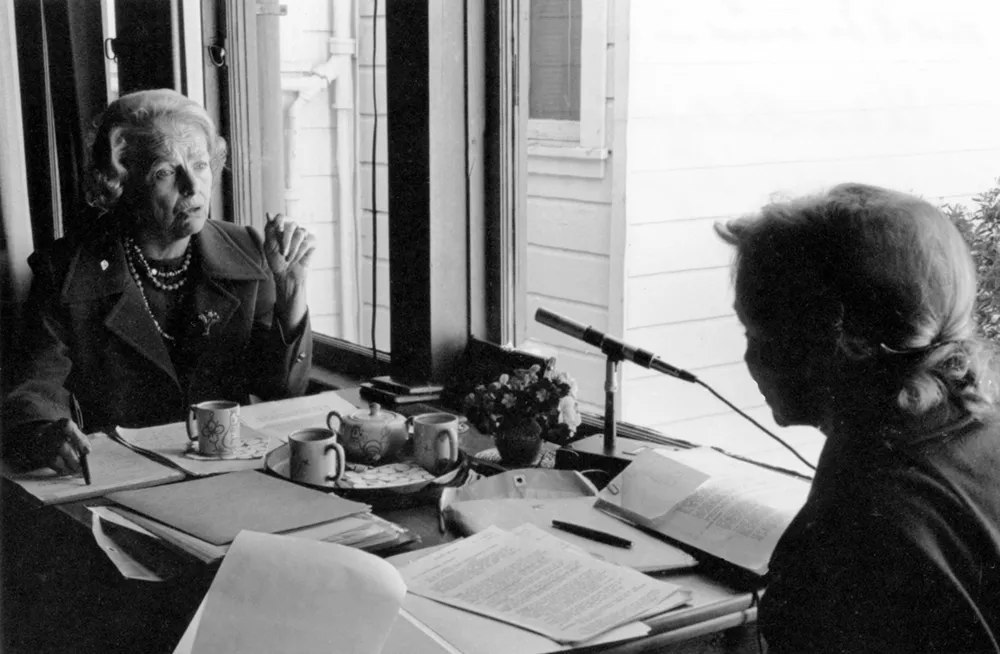The Oral History Center provides resources for K-16 educators to help students learn through oral history, as well as opportunities for undergraduates to get experience in oral history process and production. For decades, the Oral History Center has partnered with educational resource organizations, such as the California History-Social Science Project, to build curriculum content for K-16 educators using our oral history collection. Our collection provides a wealth of firsthand accounts relevant to classes on American history, world history, and government, including interviews on civil rights, immigration, politics, and LGBTQ history, to name just a few.
The resources in this section include individual lesson plans for specific topics, such as epidemics in history; user guides for our search tool; and sample projects with multimedia components. Opportunities for undergraduates include internships, student employment, and prizes.
If you’re interested in our educational programs, such as our Introductory Workshop or Advanced Institute, or resources on how to do oral history, such as remote interviewing or interviewing tips, visit the Educational programs section of this website.
More about our K-16 resources
Classroom resources
Oral History interviewing
Find recommendations for how to build a class in which the students conduct interviews. For education during the COVID-19 pandemic, there is also information on how to record interviews using Zoom.
How to Build a Class Around Oral History
Recording Oral History Using Zoom
General resources
Get the information you need to use existing oral histories in the classroom, with a guide for how to use our advanced search tool to find content in our oral history collection, as well as examples of different types of assignments students could do using our oral histories.
How to use our advanced search tool to find material from among our 4,000+ interviews!
AIDS curriculum
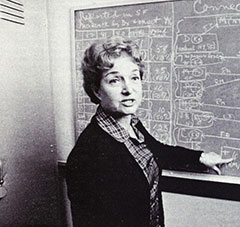
This grade 11 curriculum module was designed for teaching the history of epidemics in U.S. history. Although there is a brief primer on the broad patterns of epidemics in U.S. history, there is a strong focus on the primary sources of our collection of interviews about the early years of the AIDS epidemic in San Francisco.
This module makes extensive use of our seven-episode First Response podcast, which provides an accessible history of the epidemic using the interviews from our collection. Use the podcast to help students identify themes in the interviews that will help them think about their assignments. There is suggested content for assignments in four topic areas: women and gender in the epidemic; researchers hunting for an unknown disease in different ways; public health and early treatments for an unknown disease; and the struggle for gay rights in the context of the epidemic. Each of these topics was touched on in the podcast, but there is plenty of room for students to take them further in their assignments. However, it should be a requirement that they not merely duplicate the information that is in the podcast.
Finally, there is a page of additional online primary sources for the students to consult. The actual nature of the assignments depends on your class level. We had in mind a grade 11 class of motivated students.
Introduction to Epidemics in History Module
The AIDS Archive Lesson Plan: Oral History as Evidence
Historical HIV/AIDS General Resources
This document contains the following assignments:
- Sample assignment to work on together as a class
- Women on the Front Lines: Gender, Identity, and Values
- Virus Hunters: The Search for HIV
- The Early Search for Treatments
- Pride and Prejudice: Gay Rights vs. Collective Responsibilities in the Shadow of AIDS
See also an example of the Virus Hunters assignment completed by a high school student (rising sophomore). This project took approximately 20 hours: Virus Hunters Newsletter.
Photo: Selma Dritz, M.D. (1982), early AIDS researcher, epidemiologist, and San Francisco public health official, from the Sally Hughes AIDS research collection at UCSF, on Calisphere. Photo by Jerry Telfer, San Francisco Chronicle.
Get experience
There are a variety of ways for undergraduates to engage with the Oral History Center. Internship opportunities enable students to conduct research; assist in interviews; and create interpretive materials, such as articles and podcasts. Different employment opportunities include everything from working with audio visual to writing tables of contents for oral history manuscripts.
For information about opportunities for graduates and post-graduates, please visit the Educational Programs section of the website.
URAP (Undergraduate Research Apprenticeship Program)
The Undergraduate Research Apprentice Program (URAP) is designed to involve UC Berkeley undergraduates more deeply in the research life of the University, with new opportunities announced at the start of each semester. When the Oral History Center has research opportunities for URAP students, these will be posted on the URAP website. URAP students receive college credit and a small stipend.
Examples of former projects include:
Creation of the podcast “‘Rice All the Time?’: Chinese Americans in the Bay Area in the Early 20th Century,” by Miranda Jiang.
Scientific research by Caitlin Iswono, as described in her article “A Story of Science: Oral History Undergraduate Research.”
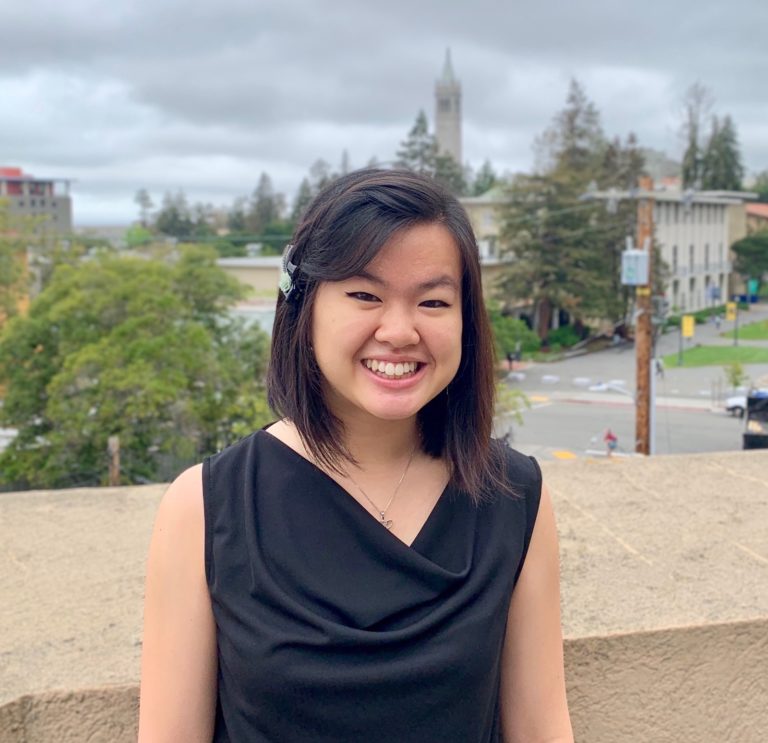
Internships
We do not have a formal independent internship program at this time. Please contact the director of the Oral History Center to inquire about any other opportunities that might be available. (See the Overview section for contact information.)
Employment
The Oral History Center has a number of paid employment opportunities for UC Berkeley undergraduates with and without work study. Student employees assist in the production and promotion of oral histories, which could include working with audio visual; depositing materials to The Bancroft Library; office assistance; writing tables of contents for oral histories; editing front matter for our oral history manuscripts; conducting research for social media; and researching and writing articles based on our collection. Positions open most frequently at the beginning of each semester and the summer, but there might be open positions at any time of the year. To see if there are employment opportunities available, visit Handshake, UC Berkeley’s recruiting platform for UC Berkeley students. If there are no open positions, check Handshake again later.
Here are some examples of projects by student employees.
For the 150th anniversary of women at UC Berkeley, research assistant Deborah Qu created a collection guide of oral histories of the Women of the University of California, then wrote articles about some of the women, including this one: “The Fighting Spirit of Ida Louise Jackson.”
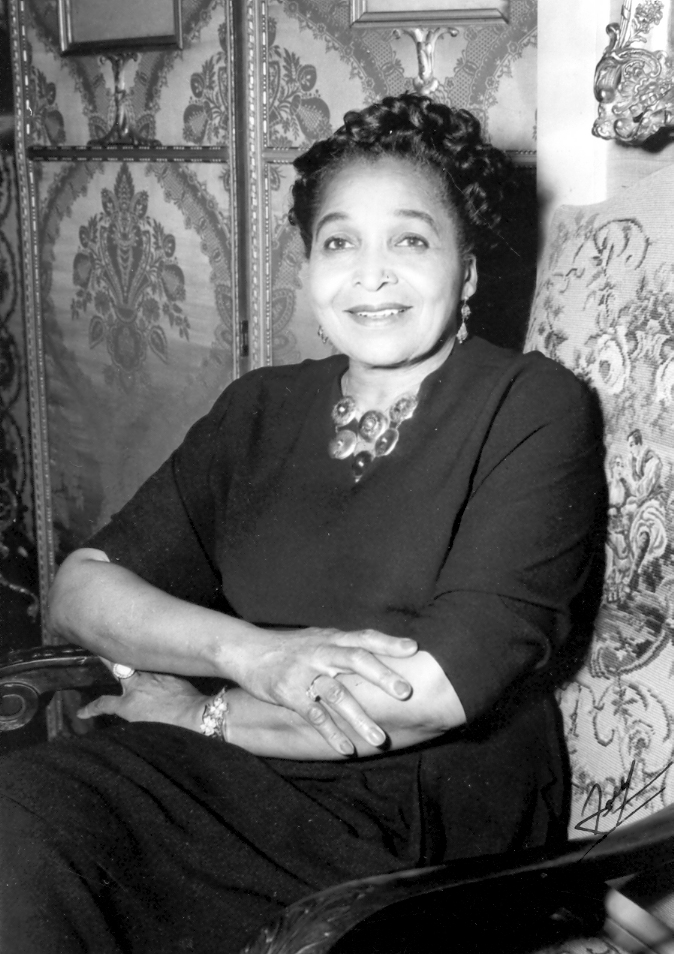
For the anniversary of Title IX, editorial assistant William Cooke wrote this article: “Title IX in Practice: How Title IX Affected Women’s Athletics at UC Berkeley and Beyond.”
Prizes
The Carmel and Howard Friesen Prize in Oral History Research
The Carmel and Howard Friesen Prize in Oral History Research recognizes scholarly achievement in using primary source material. The $500 prize will be awarded to a UC Berkeley undergraduate who submits the best essay in any discipline that draws upon Oral History Center interviews.
About Carmel and Howard Friesen
The prize is named for Carmel and Howard Friesen, Cal alums who shared a love of the campus (where they met), The Bancroft Library, and undergraduate education. In 2015, the Friesens granted the Oral History Center a generous endowment that supports this prize, with the goal of encouraging and recognizing undergraduate student achievement in research. The endowment also supports oral history interviews, and Howard Friesen is a narrator of his own oral history, Howard R. Friesen: Engineer, Entrepreneur, and Philanthropist of UC Berkeley. Carmel (Candy) and Howard were married for 64 years until Carmel passed away in 2015.
About Oral History Center interview topics
The Oral History Center has interviews on almost every topic imaginable — with a focus on the United States and a smattering of international interviews. A project like Dreyer’s Grand Ice Cream, for example, addresses issues including California’s coastal climate, food and wine agribusinesses, and the growth of multinational corporations. Interviews are easily accessible online.
Thematic areas include arts and literature; the environment, science, engineering, and medicine; social movements; community history; business and labor; politics and government; law and jurisprudence; food, wine, and agriculture; and the history of the University of California.
Major projects featuring multiple interviews include: the Berkeley Free Speech Movement; the marriage equality movement; Rosie the Riveter / World War II Home Front; venture capital; Kaiser Permanente and health care; San Francisco Museum of Modern Art; mining and the environment; the law clerks of Chief Justice Earl Warren; the Sierra Club; the disability rights and independent living movement; Napa Valley; and Japanese American Confinement Sites, to name just a handful.
Searching the collections
Use the search feature on the OHC overview page to search by title, topic, or keyword. Or you can browse our projects. After you’ve conducted your own search, you can contact Director Paul Burnett if you have an idea for a paper and would like some assistance culling through our collections.
Due date and submission requirements
The deadline for the prize is the last day of the spring semester at 11:59 p.m. The prize recipient will be notified over the summer.
Submissions should be delivered via email to OHC Director Paul Burnett. You may submit a paper at any time throughout the year.
Eligibility and selection criteria
Eligibility
- You must be a UC Berkeley undergraduate.
- The paper must be written for a credit course at UC Berkeley.
- Papers should have been written during the current academic year, the previous summer, or the previous spring. For example, for the spring 2021 prize, students can submit papers from a class taken in spring 2021, fall 2020, summer 2020, or spring 2020.
- The essay should be no longer than 15,000 words and should contain appropriate citations. There is no minimum length.
Selection criteria
The selection committee will evaluate the submission based on these three criteria:
- How well oral histories are integrated within and essential to the overall essay
- How creatively oral histories are used in the essay
- The overall quality and persuasiveness of the essay
Financial aid regulations
Please note: Federal financial aid regulations require that all awards received by a student not exceed their financial aid need as determined by a Congressional formula. It is possible, therefore, that the cash award for a prize could reduce some component of a student's package of financial aid awards. In these cases, the Financial Aid Office attempts first to reduce loan or work aid; fellowships, grants or scholarships are only reduced as a last resort.
Questions
Questions may be directed to OHC Interim Director Paul Burnett.
Environment exhibit
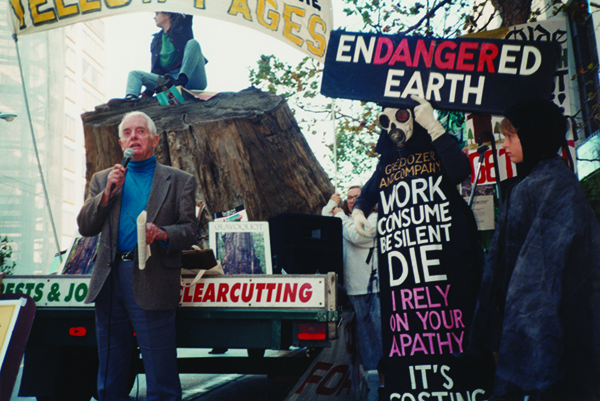
Voices for the Environment exhibit: October 2023 – November 2024
Voices for the Environment: A Century of Bay Area Activism is open Oct. 6, 2023, to Nov. 15, 2024, in The Bancroft Library gallery. See the complete schedule in the gallery’s calendar. The gallery is located just inside the east entrance of The Bancroft Library.
This exhibit charts the evolution of environmentalism in the San Francisco Bay Area through the voices of activists who helped galvanize public opinion to advance their causes. No state grappled with these causes more than California, and few regions were as significant for the evolution of environmentalism as the Bay Area. From tensions over preservation in the wake of the San Francisco earthquake and fire of 1906, to the midcentury inclusion of environmental protection in state regulations, to demands to address the disproportionate burdens of pollution and illness that communities of color endured, the Bay Area was on the front lines. The historical recordings featured in this exhibit offer rare firsthand narratives of these seminal events and the people who led the charge. This interactive exhibit, curated by the Oral History Center, is the first in-depth effort to showcase oral history along with other archival collections of The Bancroft Library.
Prologue
The exhibit opens with paintings: representations of a romantic ideal of nature — a wilderness whose beauty inspires and restores the spirit, and which stands in contrast to the explosive and often damaging growth of modern cities. They illustrate the notion that nature is more than just a source of food and materials, and that nonhuman organisms and their habitats have intrinsic value. But these paintings also represent the perspectives of European settlers, who alternately placed Native Americans and non-Europeans “in” nature or erased them completely from view.
Through oral histories, people with different perspectives from different periods will describe in their own words what their environments meant to them, and of their struggles to change how they related to nature and to one another. Unlike paintings, which express the imagination of the painter, the oral histories in this exhibit are the testimony of witnesses to history which speak directly to you, across time. We invite you to engage with these voices from the Bay Area over the 20th century.
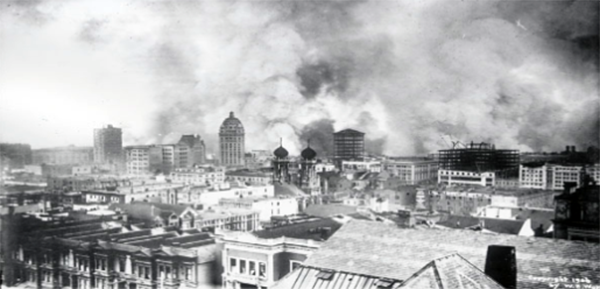
A preservationist spirit
On the morning of April 18, 1906, a massive earthquake struck San Francisco and the broader Bay Area. The quake crumpled buildings and ignited enormous fires that destroyed 80 percent of what was then California’s largest city, leaving a death toll of more than 3,000 people. Strong sentiments to preserve and protect California’s unique environment from human and industrial use had been in circulation for decades, demonstrated by the 1892 founding of the Sierra Club by John Muir and others. After the earthquake and fires, however, demands to rebuild San Francisco targeted the state’s ancient and fire-resistant redwood trees, while desires for a reliable water supply called for damming the Hetch Hetchy Valley within Yosemite National Park. In the decades that followed, an outpouring of activism shaped the ensuing conflict between economic development and environmental protection, and fueled a preservationist spirit in the Bay Area that would only grow over the next century.

Tides of conservation
After World War II, California experienced another development boom, especially throughout the Bay Area. With population rising by the millions and space at a premium, developers targeted the 1,600 square miles of the bay itself, proposing a host of fill projects that would turn its waters into habitable land. In response, activists inundated city council meetings and demanded that local officials protect the region’s famed waterfront from such development schemes. Activists rallied under the banner of the Save San Francisco Bay Association. By 1965, the association’s advocacy led to the creation of the San Francisco Bay Conservation and Development Commission, or BCDC, a new state agency charged with regulating all development on the bay. The creation of BCDC marked two important steps in the evolution of Bay Area environmentalism. First, it gave environmental considerations a permanent place in state government. Second, the agency aimed to strike a balance between economic development and environmental conservation, as reflected in its name. Ultimately, BCDC would establish the blueprint for other regulatory agencies, such as the Tahoe Regional Planning Agency, the Delta Stewardship Council, and the California Coastal Commission.
Environmental justice for all
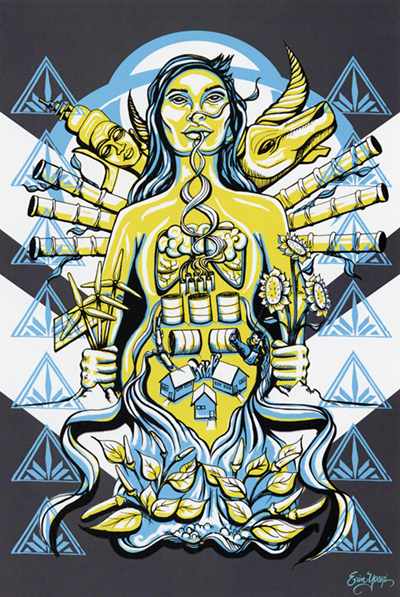
By the late 20th century, some decisions about development and environmental protection became embedded in government bodies, but not all Bay Area communities experienced equal protection. Across the nation, communities of color had long confronted environmental racism—the disproportionate burden of environmental hazard and harm placed on underrepresented communities from toxic waste and industrial pollution in their neighborhoods. In the Bay Area, the city of Richmond proved a case in point. Home to the Chevron oil refinery and a host of other industries, neighborhoods in Richmond experienced higher levels of pollution and toxins, habitat destruction, lower qualities of natural resources and environmental amenities, and exploitative dumping. Yet again, residents organized to demand change for their communities, this time for environmental justice—the equal treatment and meaningful involvement of all people in environmental decision-making. By the close of the 20th century, citizen activists from Richmond and other Bay Area communities played an important role in placing people—not just landscapes—within the environmental agenda. Their ongoing efforts, from shutting down toxic incinerators to ensuring a community voice in decision-making, have reshaped public policies to include the principles of environmental justice at federal, state, and local levels.
Immersive experience
Podcasts can be accessed through smartphones during the exhibit, as well as after, so for those with more time, headphones are recommended.
The Voices for the Environment exhibit provides a unique immersive audio experience. This audio is available in two formats: audio spotlights within the gallery and podcasts that are accessible within and outside the gallery through a smartphone. Each section of the exhibition features audio spotlights from oral histories as an integral part of the exhibit. For those with more time and a smartphone, three podcast episodes explore each theme in more depth, guiding guests through the history displayed in the exhibit (headphones are recommended).
The in-depth podcast episodes are available on SoundCloud and accessible at any time. Written versions of the audio are provided for the deaf and hard of hearing, and can also serve as a valuable research tool for students and scholars.
Educational resources
We have created resources for K-16 educators to complement the exhibit. These resources include the following:
- Exhibit workbook presents environmental history and oral history concepts and poses historical questions based on the exhibit. The questions are designed to be able to be addressed by students in various grade levels. The Bancroft Gallery welcomes school groups! If you’d like to bring your students, please contact bancroft-library.berkeley.edu or call The Bancroft Library administration office at 510-642-3781.
- Podcasts about each section of the exhibit, which delve more deeply into each theme, along with written versions.
- Online exhibit: After the closing of the exhibit in November 2024, we will have an online version available for use in classrooms.
Credits
Curators:
Todd Holmes, Oral History Center
Roger Eardley-Pryor, Oral History Center
Designer:
Gordon Chun, Gordon Chun Designs
Podcast narrator:
Sasha Khokha, KQED San Francisco
Your support makes our work possible
Your support enables us to capture and preserve a wide range of perspectives on the world’s most pressing issues. While we receive modest institutional support, we are a predominantly self-funded research unit of The Bancroft Library. We must raise the funds to cover the cost of each oral history, as well as our educational resources; interpretive materials, such as our podcasts; and exhibits like this one. Learn more about us and donate here.
